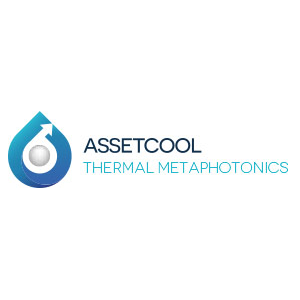Sustainable energy means a more efficient grid and better storage. These breakthrough spinouts have ideas on how to do it.

The switch to more sustainable energy sources also requires multiple changes — large and small — to our power grids. Being able to effectively store excess solar or wind power, for example, or making sure too much isn’t lost in transmission are the less glamorous but essential parts of creating a green energy system.
We’ve taken a look at some of the breakthrough technologies coming out of universities that can help in greening the grid. They involve new chemical discoveries and advances in thermal management that open up interesting new possibilities.

AssetCool
- Founded: 2020
- Funding to date: $2.8m
- Location: UK
- Website: AssetCool.com
Getting energy from point A to point B inevitably means losing some of that energy — electrical resistance causes some of the energy to be dissipated as heat. These are not trivial amounts: 1.7% of electricity is lost on the UK transmission network (the major, high voltage power lines) and another 5% to 8% is lost on distribution networks (the local, lower voltage lines going into buildings).
AssetCool, a thermal metaphotonics spinout of the University of Manchester, says its coating for overhead power lines can reduce electricity losses by up to 10% — essentially, its coating is made of a material that interacts with different wavelengths to cool down the power line. The spinout also expects the coating to increase the capacity of these cables by as much as 30%, supporting the shift to electrification.
And, if the thought of recoating hundreds of thousands of kilometres of electric cable sounds daunting, AssetCool has also developed aerial coating robots to retrofit existing infrastructure.
The company raised £2.25m ($2.8m) in series A funding last month led by Northern Gritstone, the investment firm set up by the universities of Manchester, Sheffield and Leeds. Mercia-managed Northern Powerhouse Investment Fund and Kero Development Partners also contributed.

Exergy3
- Founded: 2019
- Funding to date: $750,000
- Location: UK
- Website: Exergy3.com
What do you do with excess energy generated from renewable sources? You could store it in grid batteries and release it when needed, or, if Exergy3 has its way, you could use it for industrial processes.
Exergy3, spun out of the University of Edinburgh, has created a modular energy storage system that takes excess energy from the grid and stores it at temperatures of up to 1,200° Celsius with minimal energy loss. The technology could store up to 36MWh in a system the size of a shipping container.
The technology has applications in industries like food and drink, where Exergy3 is getting ready to launch a trial at a whisky distillery in Scotland to generate the steam needed during the distillation process.
Exergy3 has received £3.6m ($4.4m) in grant funding from the UK government’s Industrial Fuel Switching Competition, and £600,000 in financing from Scottish Enterprise.

Exnaton
- Founded: 2020
- Funding to date: Undisclosed
- Location: Switzerland
- Website: Exnaton.com
If you have solar panels on your roof, what do you do with excess energy? Odds are, unless you have a battery and an EV charging outside, some of it is going into the grid. But what if you could sell it to your neighbours?
That’s the vision of Exnaton, which has built a platform to trade solar power within local communities.
But the ETH Zurich spinout’s technology goes beyond this and also targets grid operators who want to offer dynamic electricity pricing. Its billing engine is connected to the European Power Exchange and allows energy providers to offer time-variable tariffs even if the customer doesn’t have a smart meter.
It might not be obvious, but dynamic pricing can help with increasing renewable energy use because it addresses a mismatch between demand and supply. Think of it this way: if there’s too much solar power going into the grid, the price for customers is reduced and they can run appliances at a cost-efficient time. That, in turn, means they’re not turning on the appliance when demand is high and fossil fuels are needed to cope with energy needs.
Exnaton’s clients span utility companies in Germany, Austria, Switzerland and Luxembourg, and its investors include Übermorgen Ventures and Global Founders Capital although it has not revealed how much its preseed and seed rounds were worth.

Odqa
- Founded: 2017
- Funding to date: Undisclosed
- Location: UK
- Website: Odqa.com
Odqa, spun out of the University of Oxford, uses solar thermal energy to generate electricity. In other words, its technology captures heat rather than converting the sunlight into electricity through photovoltaic cells (the latter is how solar panels operate).
Generating electricity by capturing heat this way isn’t new or unique — there’s other players in the concentrated solar power industry. What makes Odqa stand out is that its technology foregoes heat transfer materials like molten salts and instead relies on materials including steel and ceramics, as well as air, to create a system that can operate from 800° to 1,500° Celsius.
Odqa’s technology achieves this while operating at a scale up to ten times smaller, or a cost reduction of up to 40% at the same scale as other plants. The spinout envisages its plants as smart, quasi batteries for the grid, deploying renewable energy based on real-time needs as conventional PV or wind energy are unable to keep up with demand.
The basis for Odqa’s technology comes from a seemingly unrelated sector: aerospace. In fact, the spinout used modelling tools, materials and principles common in jet engine design.
Odqa has received a £1.2m ($1.5m) convertible loan from the UK government’s Future Fund. It raised equity funding last month, but has not revealed the size of that investment. Its shareholders include university venture fund Oxford Science Enterprises.

PeCo Power
- Founded: 2020
- Funding to date: Undisclosed
- Location: South Africa
- Website: PeCoPower.co.za
In South Africa, some 10% of the population is not expected to be connected to the grid in the foreseeable future and this challenge is even more acute in other nations on the continent.
You could use generators, but that means paying for fuel and it adds to global warming. South Africa also regularly faces the challenge of load shedding — a series of controlled, rolling blackouts to avoid overloading the grid when demand becomes too high.
University of the Witwatersrand spinout PeCo Power takes a different approach to generators: its “smart power bricks” function like mini-grids that can power a home using solar energy. They come with a large lithium battery to store excess energy for overnight use and that battery can also be charged from the grid (for users who live in an electrified neighbourhood but face load shedding).
Importantly, the devices are expandable and can be connected to build larger systems. They are also easy to install and do not require technical expertise to run.

Quino Energy
- Founded: 2021
- Funding to date: $4.55m
- Location: US
- Website: QuinoEnergy.com
Plugging solar and wind power into the grid requires grid-scale batteries to store energy, because you can’t just turn renewable energy on and off as you can with a nuclear fusion or coal power plant.
Quino Energy, a spinout of Harvard University, is using an intriguing base for its flow batteries: water. Specifically, Quino Energy’s technology relies on quinones (an abundant organic compound found in vitamin K, dyes like henna and other substances), which can store electricity and are soluble.
The challenge until now has been that quinone decomposes over time, but Harvard researchers figured out that periodically subjecting the liquid to mild oxidation allows them to restore the quinones to their original function as reactants within the battery.
The technology could be deployed at low cost, would be rapidly scalable and could be manufactured locally (because Quino’s process converts turns dyestuff chemicals made from coal tar into quinones using the flow battery system itself as the production reactor, so there’s zero chemical waste and no need for a factory). The technology would also, thanks to its water-base, offer fire safety.
The US Department of Energy has awarded Quino Energy a $4.58m grant, and the company has also raised $4.55m in seed capital from TechEnergy Ventures, the corporate venture capital arm of the energy transition division of engineering group Techint, as well as ANRI, Energy Revolution Ventures and Doral Energy Tech Ventures, the corporate venturing unit of renewable energy infrastructure developer Doral.

Reverion
- Founded: 2022
- Funding to date: $19.3m
- Location: Germany
- Website: Reverion.com
Reverion is the best-funded and possibly best-known company on this list, and there’s a good reason the TU Munich spinout has generated such buzz. Its offering is an all-in-one system that electrochemically converts biogas or hydrogen into electricity with an efficiency of 80%.
Crucially, that system is reversible. If more energy isn’t needed by the grid, Reverion’s technology switches into electrolysis mode to produce green hydrogen or methane.
The technology is plug-and-play and sits within a shipping container-sized unit. Reverion expects the technology will allow it to essentially offer carbon-negative energy.
Founded last year, research into its technology dates back to 2015. Its €15.5m ($19.3m) in early-stage funding — from investors including TU Munich-affiliated UVC Partners, biomethane trader Landwärme and Doral Energy Tech Ventures, the corporate venturing unit of renewable energy infrastructure developer Doral — is in addition to €12m in grant funding and more than €60m in preorders.
Main image courtesy of Exnaton.
Disclaimer: This list is for informational purposes only. It does not constitute investment advice.

Thierry Heles
Thierry Heles is editor-at-large of Global University Venturing and Global Corporate Venturing, and host of the Beyond the Breakthrough podcast.








